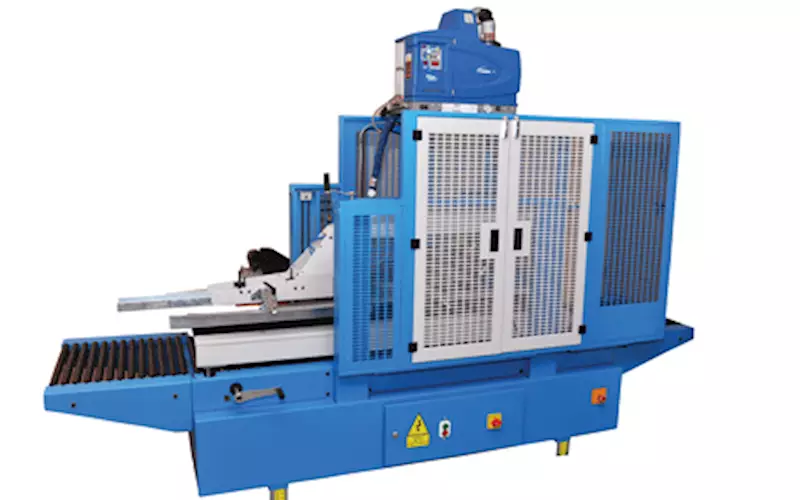An ideal solution for the packaging industry, this top and bottom case sealer from Welbound promises better brand value with structural rigidity and improved product security, reports Anand Srinivasan
When it comes to end-of- the-line packaging, most of the printers and the packaging converters have to rely on taping for their shipping boxes. Historically speaking, in India as well as globally, shipping cartons are being sealed using tapes.
According to P Sajith, director marketing at Welbound Worldwide, there are several issues related to tapes when it comes to product security. “You can tamper with the tape/box and remove the products from inside,” he says.
Welbound’s new machine, Hotcase 500 takes care of this problem by implementing hot-melt gluing technology. The made in India machine is supported by Nordson on the gluing system, and Henkel, which makes new generation adhesives for this system.
According to Sajith, gluing in India comprises of only a small portion in the end-of-line packaging. Packaging manufacturers like Pepsi, Coke and some of the beer manufacturers, who would be Welbound’s target for this machine, would fall under this pie. These players have dedicated lines integrated into their plants.
But, what about the medium and small packaging converters in the FMCG and food sector? Hotcase provides an economic solution in this case. Capex involved in tapes will be cheaper whereas the operational expenditure in adhesives are cheaper.
| SPECIFICATIONS |
|---|
|
Mechanical Speed20 cases/min
Max length500mm
Min length150mm
Max width500mm
Min width180mm
Max height500mm
Min height150mm
Interlocking safety shields
|
Hotcase 500 is all about using hot-melt adhesives to close the box. The advantage here is when you try and open the box you get the evidence of tamper, which otherwise is not the case with tapes, thus adding onto product security. It can also be stored for a longer time and it can be shipped off to colder countries where tapes wear off.
“When compared to taping systems, these gluing systems offer numerous advantages,” says Sajith. First of all, tapes take away a lot of branding space on the boxes. It’s either no branding or using transparent tapes. Talking of rigidity of the box, when you tape a box, the minor flaps are not in contact with the majors. When something is stacked over the box, the box can get compressed.” When you use a hot-melt, the minor and the major are closed together. This way it gives firmness.”
Hotcase 500 is a conveying system where the shipping cartons are filled with products inside and the bottom and the top flaps of the boxes are opened by the machine and using a sophisticated gluing system which employs hot-melt adhesives, sprays onto the box. This way the box is sealed immediately and gives a green strength immediately.
Welbound has not yet launched this product officially which is supposed to be first of its kind. Though, Sajith says that the machine should soon be on the market officially with the machine already been employed in several beta sites in India addressing different segments.
Speaking on cost-sensitivity as a factor, Sajith says, “When you compare tapes vs adhesives, our reading is that adhesives should be cheaper. For instance, you have a very long box, the amount of adhesive needed on this long box and a small box is the same, whereas tape needed is more.” “Taping machines are definitely a cheaper option,” says Sajith. “But when it comes to speed, taping can’t be an option since you have to reload the tape every time the roll wears off. This probably is not a challenge in India yet,” he adds.
“We are not addressing the speed yet, but we are focused more onto longer storages, shipping over a longer duration, brand ability and the most important thing being tamper evident.”
As an alternative to this machine worldwide, there are European manufacturers who have big lines made for this and also offline machines. “Compared to these machines, we are at par globally with the technology and we have studied what is available and tried to incorporate what is needed in an Indian environment to make them more stable and sturdy.”











 See All
See All